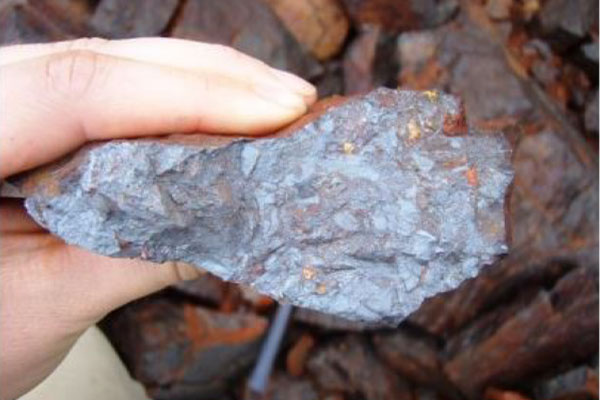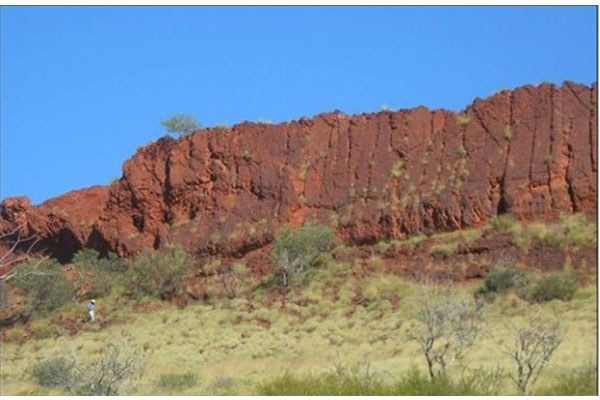Strike reveals maiden high-grade iron ore resource and shares jump 74pc

Pic: Bloomberg Creative / Bloomberg Creative Photos via Getty Images
Special Report: Shares in Strike Resources have taken off this morning after the junior explorer unveiled an impressive high-grade iron ore resource – the very first for the Paulsens East project in the Pilbara.
The company’s (ASX:SRK) share price advanced as much as 73.5 per cent to an intra-day peak of 8.5 per cent.
And it wasn’t surprising given the grade of the resource – 9.1 million tonnes at 63.4 per cent.

There are very few junior explorers in the iron ore space as it is, but even less with such high-grade. That is a grade not even the bigger players are producing.
“This maiden JORC inferred mineral resource for Paulsens East confirms the presence of a well-located significant occurrence of high-grade potentially direct shipping iron ore,” managing director William Johnson said.
JORC refers to the mining industry’s official code for reporting exploration results, mineral resources and ore reserves, managed by the Australasian Joint Ore Reserves Committee.
Mineral resources are categorised in order of increasing geological confidence as inferred, indicated or measured.
“We believe we can fast-track this asset to development in the next six to nine months and
generate potential significant cash flow in this strong iron ore price environment,” Johnson said.
“At the same time, Strike is also closely looking at ways to generate some additional near term cashflow and value from its iron ore assets in Peru and will update the market on this in due course.”
Strike is investigating the potential for an up to a 1-million-tonne-per-annum direct shipping ore (DSO) operation at Paulsens East.
DSO refers to minerals that require only simple crushing before they are exported, which keeps costs low.
In pole position
Strike has had its Western Australian and Peruvian projects for nearly 15 years and has done a fair bit of work on each in the past.
Now the iron ore price has picked up substantially, the company is well placed to take the projects through to production – hence why it was so quick to define an initial resource after only recently dusting off the projects.
Paulsens East is located in the extremely iron ore fertile Pilbara region – well known as the home to iron ore heavyweights Rio Tinto (ASX:RIO), BHP (ASX:BHP) and Fortescue Metals Group (ASX:FMG).
But Strike isn’t looking to rival the big boys, it’s in a potentially very lucrative league of its own.
“We’re not looking to do an FMG here and mine 50 million tonnes a year,” Johnson told Stockhead previously.
“We have defined and identified Paulsens East as a really good high-quality, but relatively small deposit of outcropping high-grade hematite.”
A key feature of the Paulsens East resource is an approximately 3km-long ridge of outcropping hematite conglomerate which extends up to 60m above the surrounding terrain.

It is estimated that the outcropping portion contains about 2 million tonnes of high-grade 62 per cent potential DSO material that may be able to be mined with minimal overburden.
This would mean mining could be undertaken relatively simply using shovels and trucks, with the material then to be crushed and screened on site prior to transport by road to a suitable port facility for export.
Strike has now started the process of converting the current retention licence to a mining licence.
The company has also initiated talks with operators of nearby port and ship loading facilities, and plans to kick off talks with mining, crushing and transport operators as well as potential offtake partners.
Strike has topped up its kitty by $1m, via a share placement, to fund the accelerated study and approvals processes.
- Subscribe to our daily newsletter
- Join our small cap Facebook group
- Follow us on Facebook or Twitter
This story was developed in collaboration with Strike Resources, a Stockhead advertiser at the time of publishing.
This story does not constitute financial product advice. You should consider obtaining independent advice before making any financial decisions.
UNLOCK INSIGHTS
Discover the untold stories of emerging ASX stocks.
Daily news and expert analysis, it's free to subscribe.
By proceeding, you confirm you understand that we handle personal information in accordance with our Privacy Policy.








